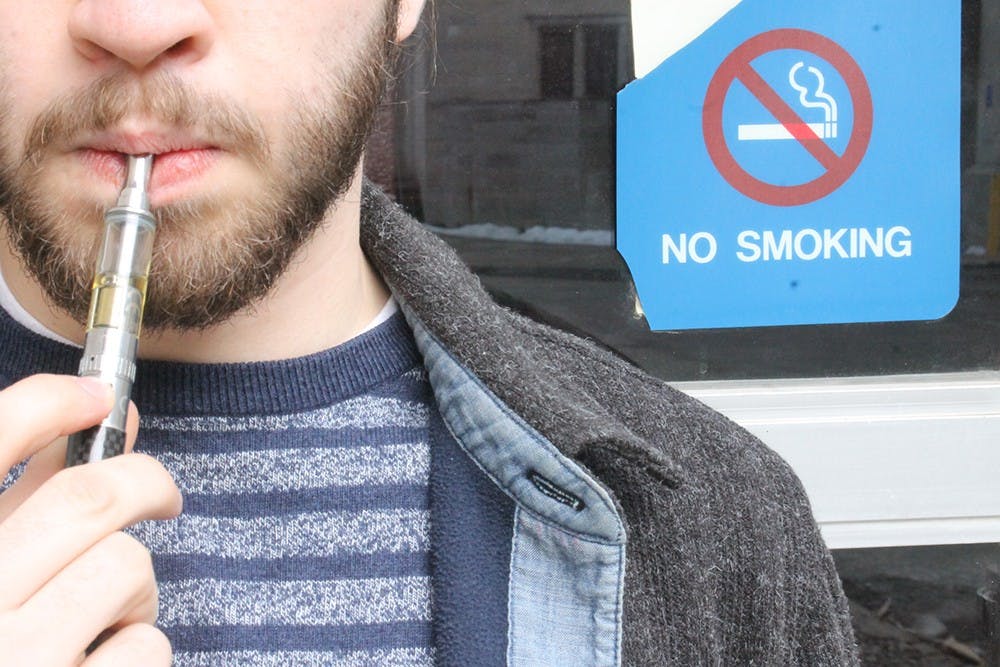These are just some of the more than 7,000 flavors of e-liquids used in electronic cigarettes.
A pair of identical bills, Senate Bill 539 and House Bill 1432, have been introduced to the Indiana General Assembly this legislative session that will add a number of regulations to the e-cigarette industry, specifically focusing on the production and distribution of e-liquids.
The bills would require manufacturers of e-liquids to obtain permits from the Indiana Alcohol and Tobacco Commission, limit the ingredients that manufacturers are able to include in e-liquids and establish manufacturing requirements so that all containers are child-proof.
Senate Bill 539 passed through the Indiana Senate on Feb. 24 with a vote of 43-6 and has been referred to the House Committee on Public Policy. House Bill 1432 passed in the Indiana House of Representatives on Feb. 24 with a vote of 85-9. It has been referred to the Senate Committee on Tax and Fiscal Policy.
The e-cigarette industry is relatively new and almost entirely unregulated, and many are claiming the variety of candy and fruit flavors of e-liquids make the products more appealing to youth.
E-cigarettes use a battery to heat and vaporize liquid in cartridges. E-liquids are the flavored, nicotine-filled substances that are vaporized in e-cigarettes, which users then inhale.
According to a study published in August by the Centers for Disease Control and Prevention, more than 250,000 youth who had never smoked a cigarette used e-cigarettes in 2013.
Currently, in order to purchase an e-cigarette a person needs to be at least 18 years old, but there are no age restrictions on the purchase of e-liquids.
Bridget Cochrane, who has worked at Circle K convenience store since April 2014, sells cigarettes, e-cigarettes and e-liquids while she works. She doesn’t normally sell to people who appear to be under 18.
“No, honestly,” she said, when asked if the sale to underage customers is common. “In order to use liquid you have to have an e-cig.”
Indiana Attorney General Greg Zoeller proposed his own legislation at the beginning of the year in an effort to curb the growing use of e-cigarettes among Indiana’s youth and has voiced his concerns about the effects the unregulated growth of the e-cigarette industry will have on public health.
“My goal is to get ahead of the curve unlike what happened with traditional tobacco products, and implement tools to reduce access to youth before we see more kids addicted to nicotine,” Zoeller said in a press release.
2014 was the first year more teens smoked e-cigarettes than traditional cigarettes, with approximately 16 percent of high school students having reported using e-cigarettes, according to a study by the National Institute of Drug Abuse.
Zoeller’s legislation, which did not gain traction in the General Assembly, would have introduced a number of regulations on the e-cigarette industry. These regulations include requiring e-cigarette shops to be licensed by the Indiana Alcohol and Tobacco Commission, taxing e-cigarettes similarly to traditional tobacco products, including e-cigarettes in Indiana’s statewide smoking ban and requiring e-liquid containers to be sold in child-resistant packaging.






